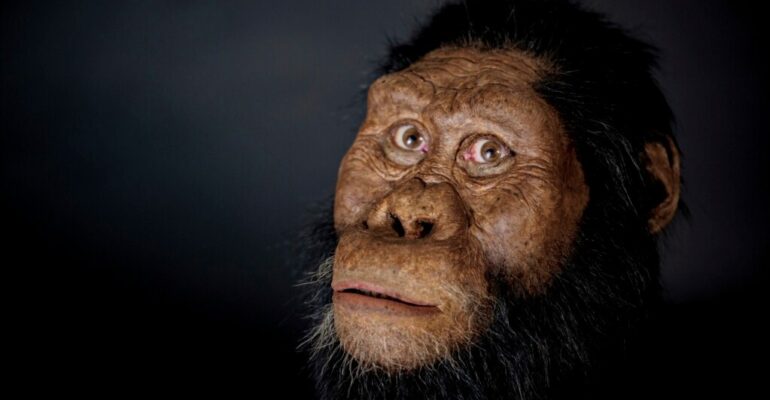Lucy (Dinqinesh = You are wonderful, in the Amharic language) turns 50. Anyone who visits the National Museum in Ethiopia cannot help but admire Lucy, the Ethiopian find without a doubt the most famous and most publicized in the world, so much so that it inspired the Ethiopian government to use the slogan “Visit Ethiopia: the cradle of humanity”.
We are talking about the Australopithecus afarensis Lucy, a hominid discovered on November 24, 1974 in the desert of the Afar region, in the north-east of the country, by a team of scientists led by Maurice Taieb, Yves Coppens, Donald Johanson, Jon Kalb and Raymonde Bonnefille.
The find dates back to 3.18 million years ago and is composed of 52 bone fragments, equal to about 40% of Lucy’s skeleton. These findings at the time were the most complete ever found and revolutionized the understanding of humanity’s ancestors.
According to a study published in 2016, Lucy, although already counted among the hominids, would have spent a third of her time in the trees, where she nested, and still had very developed upper limbs.
She was named Lucy in honor of the fact that at the time of the discovery, paleontologists were listening to the song Lucy in the sky with diamonds by the Beatles.
About 1.20 meters tall, she weighed no more than 30 kg. She walked upright, had an omnivorous diet and is thought to have been between 11 and 13 years old, which is considered adulthood.
According to the head of the paleontology department at Addis Ababa University, Sahleselasie Melaku, Lucy’s impact on the entire paleoanthropological discipline has been extremely significant since then.
Other paleontologists, such as Jean-Renaud Boisserie, a specialist in Ethiopia and director of scientific research at the French National Center, said that in fact very little was known about the period of 3 million years ago, and nothing so complete existed.
Understandably, subsequent discoveries of other finds in places such as Ethiopia, South Africa and Kenya have broadened the research framework and started a wide debate about the birth date of the different hominid species and which should be classified as part of the human or ape families.
For example, the discovery in 2001 in Chad of a skull dated 6 or 7 million years old seems to suggest that the human family may date back much earlier than previously thought.

